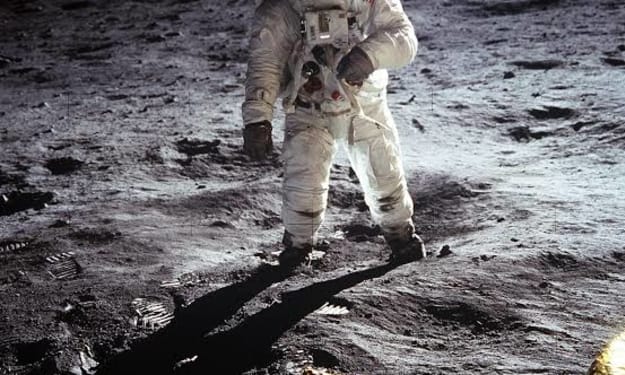From Ozone Depletion to Global Unity:
How the World Came Together to Save the Ozone Layer

The 1980s were a time of vibrant fashion trends, neon lights, and the rise of MTV. Yet, amidst all the pop culture extravagance, there was a looming environmental crisis that threatened the very fabric of life on Earth: the depletion of the ozone layer. In this article, we will journey back to the 1980s when scientists discovered a gaping hole in the ozone shield over the South Pole and explore the remarkable global effort that led to the healing of this vital protective layer.
The Ozone Layer: Earth's Protective Shield
The ozone layer, often referred to as Earth's protective shield, consists of gaseous molecules that envelop our planet. It plays a crucial role in safeguarding all living organisms by absorbing two types of harmful ultraviolet radiation emitted by the Sun. While it serves as a powerful shield, the ozone layer is also incredibly delicate.
In 1985, scientists made a shocking discovery – a massive loss of ozone right above Antarctica. Approximately 40% of the ozone layer had vanished, creating what came to be known as the "ozone hole." Scientists observed that the hole formed during the spring and worsened each year, sending alarm bells ringing across the scientific community.
The Wake-Up Call
This was not a distant, small-scale issue; it was a clear and present danger. Dr. Susan Solomon, an atmospheric chemist from Boulder, Colorado, led a team of scientists to Antarctica in 1986 to investigate the root cause of the ozone hole. Their goal was to take measurements, not just of ozone but also of different chemicals that could shed light on why it was disappearing.
Scientists released balloons into the sky to collect ozone measurements, while others gathered data on the ground. The consensus was clear: the primary culprit behind the ozone depletion was chlorine, released from a man-made compound called Chlorofluorocarbons (CFCs).
CFCs: The Silent Destroyers
CFCs, commonly used in refrigerators, air conditioners, and even styrofoam products, seemed harmless when used on the ground. However, once released into the stratosphere, the Sun's radiation broke them down into chlorine atoms. These chlorine atoms readily bound with ozone, turning it into oxygen and chlorine monoxide. The released oxygen atoms then freed more chlorine atoms to destroy additional ozone molecules, setting off a destructive chain reaction.
One significant challenge was the long lifespan of CFCs in the atmosphere, ranging from 50 to 150 years. As a result, these compounds accumulated year after year, exacerbating the problem.
The Urgent Need for Global Action
By 1987, ozone levels had plummeted by 50%, signaling a growing threat that demanded swift and coordinated action. Three key factors contributed to the success of the global response to this environmental crisis: personal relevance, perceptibility, and practical solutions.
Personal Relevance: Skin cancer, a consequence of increased UV radiation, was a tangible threat that resonated with people worldwide. The personal nature of the issue made it relatable to everyone.
Perceptibility: Satellite measurements vividly illustrated the depletion of the ozone layer, making it impossible to ignore. The visual evidence bolstered public awareness and pressure on leaders.
Practical Solutions: Substitutes for CFCs in aerosol cans were readily available and easy to implement, resulting in a rapid transition away from these harmful compounds.
The Montreal Protocol: A Global Pact
In 1987, the Montreal Protocol was established, officially recognizing the significant impact of worldwide emissions on the ozone layer's depletion and its adverse effects on human health and the environment. This international treaty outlined control measures to reduce ozone-depleting substances, including CFCs, and provided assistance to developing countries in adopting alternative technologies and products.
Every nation eventually signed the Montreal Protocol, making it the only universally ratified treaty and one of the most successful environmental agreements in history.
The Ozone Layer's Remarkable Recovery
Since the protocol's inception on January 1st, 1989, the consumption of ozone-depleting substances, including CFCs, dramatically declined. Today, more than three decades later, the ozone hole has ceased its expansion and is slowly contracting. By 2065, it is projected to have fully recovered.
The Ongoing Challenge of Climate Change
While the success story of the ozone layer restoration is heartening, our environmental challenges are far from over. Climate change, a pressing global issue, requires equally decisive action. Phasing out Hydrofluorocarbons (HFCs), which do not deplete the ozone layer but contribute to climate change, is just one part of the puzzle.
Maintaining a focus on climate change is paramount, and the lessons learned from the ozone depletion crisis - personal relevance, perceptibility, and practical solutions - can guide us towards a sustainable and resilient future. The fate of our planet depends on the choices we make today, and history has shown that when the world comes together, even the most daunting challenges can be overcome.
About the Creator
Resian Sankei
Passionate environmentalist, psychology enthusiast, and avid writer on a mission to inspire change and spark curiosity.






Comments
There are no comments for this story
Be the first to respond and start the conversation.